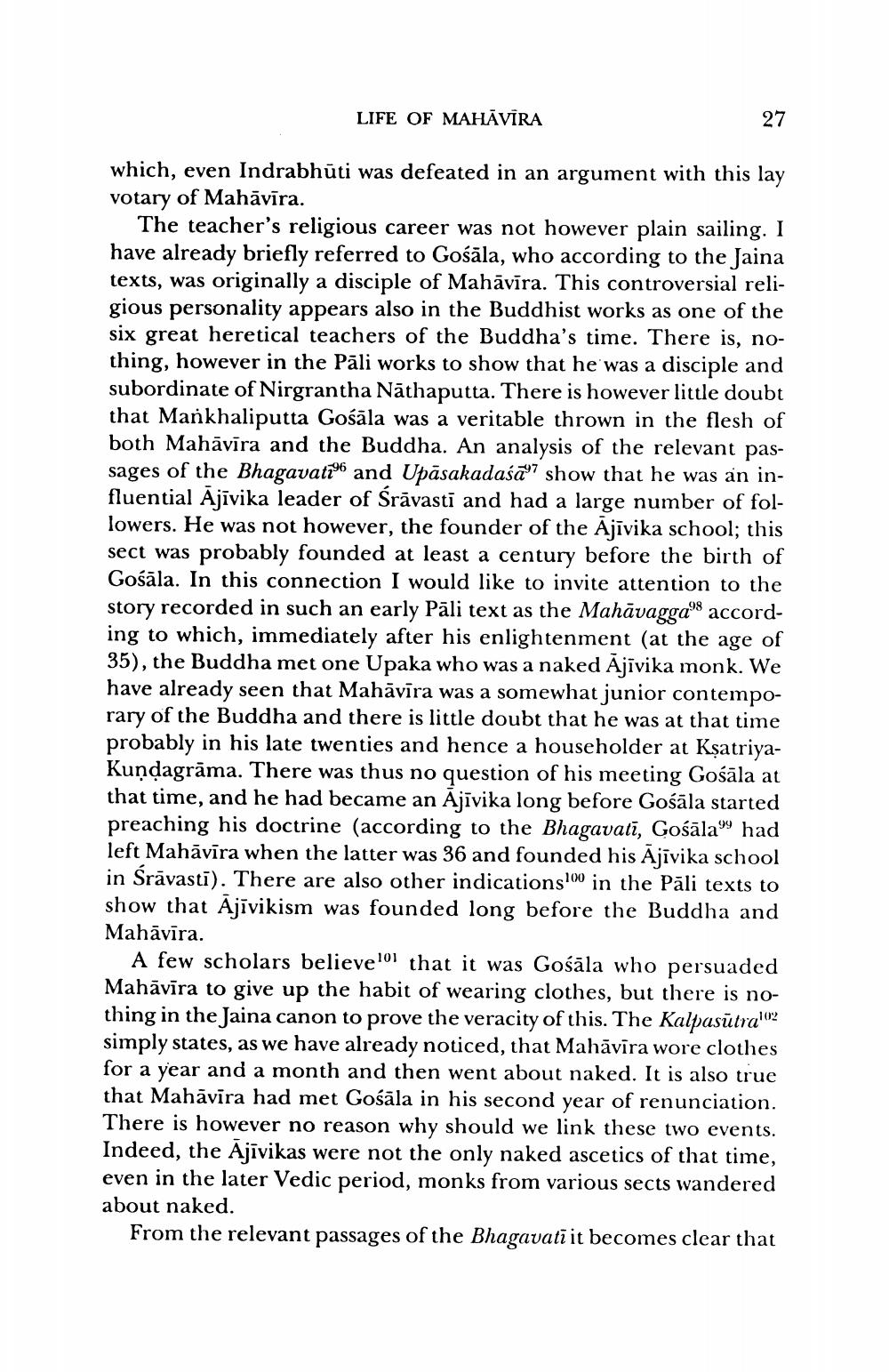________________
LIFE OF MAHĀVĪRA
27
which, even Indrabhūti was defeated in an argument with this lay votary of Mahāvīra.
The teacher's religious career was not however plain sailing. I have already briefly referred to Gośāla, who according to the Jaina texts, was originally a disciple of Mahāvīra. This controversial religious personality appears also in the Buddhist works as one of the six great heretical teachers of the Buddha's time. There is, nothing, however in the Pāli works to show that he was a disciple and subordinate of Nirgrantha Nāthaputta. There is however little doubt that Mankhaliputta Gośāla was a veritable thrown in the flesh of both Mahāvīra and the Buddha. An analysis of the relevant passages of the Bhagavation and Upāsakadasā°7 show that he was an influential Ajīvika leader of Srāvasti and had a large number of followers. He was not however, the founder of the Ajīvika school; this sect was probably founded at least a century before the birth of Gośāla. In this connection I would like to invite attention to the story recorded in such an early Pāli text as the Mahāvagga” according to which, immediately after his enlightenment (at the age of 35), the Buddha met one Upaka who was a naked Ajīvika monk. We have already seen that Mahāvīra was a somewhat junior contemporary of the Buddha and there is little doubt that he was at that time probably in his late twenties and hence a householder at KsatriyaKundagrāma. There was thus no question of his meeting Gośāla at that time, and he had became an Ajīvika long before Gośāla started preaching his doctrine (according to the Bhagavatī, Gośālao had left Mahāvīra when the latter was 36 and founded his Ajivika school in Srāvasti). There are also other indications/00 in the Pāli texts to show that Ajīvikism was founded long before the Buddha and Mahāvīra.
A few scholars believe!) that it was Gośāla who persuaded Mahāvīra to give up the habit of wearing clothes, but there is nothing in the Jaina canon to prove the veracity of this. The Kalpasūtra!"2 simply states, as we have already noticed, that Mahāvīra wore clothes for a year and a month and then went about naked. It is also true that Mahāvīra had met Gośāla in his second year of renunciation. There is however no reason why should we link these two events. Indeed, the Ajīvikas were not the only naked ascetics of that time, even in the later Vedic period, monks from various sects wandered about naked.
From the relevant passages of the Bhagavatī it becomes clear that




